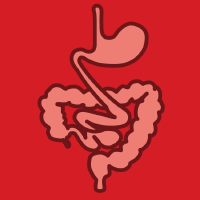Topic Menu
► Topic MenuTopic Editors



Hepatobiliary and Pancreatic Diseases: Novel Strategies of Diagnosis and Treatments
Topic Information
Dear Colleagues,
Disease of the liver and pancreas plays a significant role in the clinical, surgical, and research activity of the medical community.
Hepatitis or pancreatitis, even if benign, can put patients at risk of life as well as pose important limitations on their quality of life. Therefore, increasingly advanced medical and/or surgical treatments are required to improve the treatment of these pathologies.
Malignant tumors of the liver and pancreas represent an increasingly growing entity in our society. The incidence of pancreatic cancer has now reached a position in the top ten of the most common cancers in the world. Malignant tumors of the liver and biliary tract, fortunately, still maintain a lower incidence, albeit increasing, and are not among the most frequent malignant tumors in the general population. However, malignant tumors of the liver, biliary tract, and pancreas are gaining significance in terms of annual mortality rates.
The increase in research activity and the subsequent clinical application appears to be the only weapon available to be able to deal with cancers with such devastating results.
We therefore invite all colleagues to send us their most promising medical and surgical research in the field of HPB pathologies to make an important scientific contribution in this field.
Dr. Alessandro Coppola
Dr. Damiano Caputo
Dr. Roberta Angelico
Dr. Domenech Asbun
Dr. Chiara Mazzarelli
Topic Editors
Keywords
- liver benign disease
- pancreas benign disease
- chronic liver disease
- chronic pancreatitis
- pancreatitis
- liver cancer
- biliary cancer
- pancreatic cancer
- liver surgery
- pancreas surgery
Participating Journals
| Journal Name | Impact Factor | CiteScore | Launched Year | First Decision (median) | APC | |
|---|---|---|---|---|---|---|

Cancers
|
5.2 | 7.4 | 2009 | 17.9 Days | CHF 2900 | Submit |

Diagnostics
|
3.6 | 3.6 | 2011 | 20.7 Days | CHF 2600 | Submit |

Journal of Clinical Medicine
|
3.9 | 5.4 | 2012 | 17.9 Days | CHF 2600 | Submit |

Current Oncology
|
2.6 | 2.6 | 1994 | 18 Days | CHF 2200 | Submit |

Gastrointestinal Disorders
|
0.7 | 1.8 | 2019 | 21.3 Days | CHF 1200 | Submit |

Biomedicines
|
4.7 | 3.7 | 2013 | 15.4 Days | CHF 2600 | Submit |

MDPI Topics is cooperating with Preprints.org and has built a direct connection between MDPI journals and Preprints.org. Authors are encouraged to enjoy the benefits by posting a preprint at Preprints.org prior to publication:
- Immediately share your ideas ahead of publication and establish your research priority;
- Protect your idea from being stolen with this time-stamped preprint article;
- Enhance the exposure and impact of your research;
- Receive feedback from your peers in advance;
- Have it indexed in Web of Science (Preprint Citation Index), Google Scholar, Crossref, SHARE, PrePubMed, Scilit and Europe PMC.



